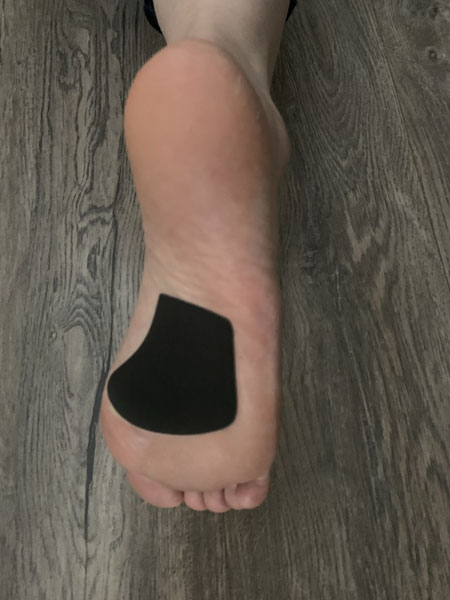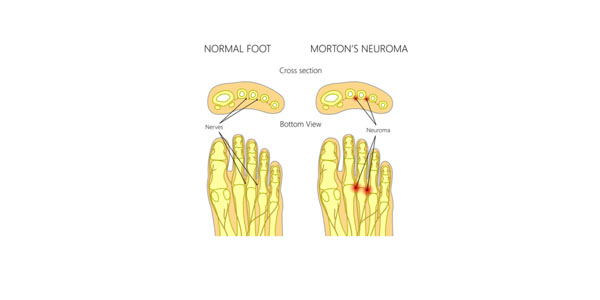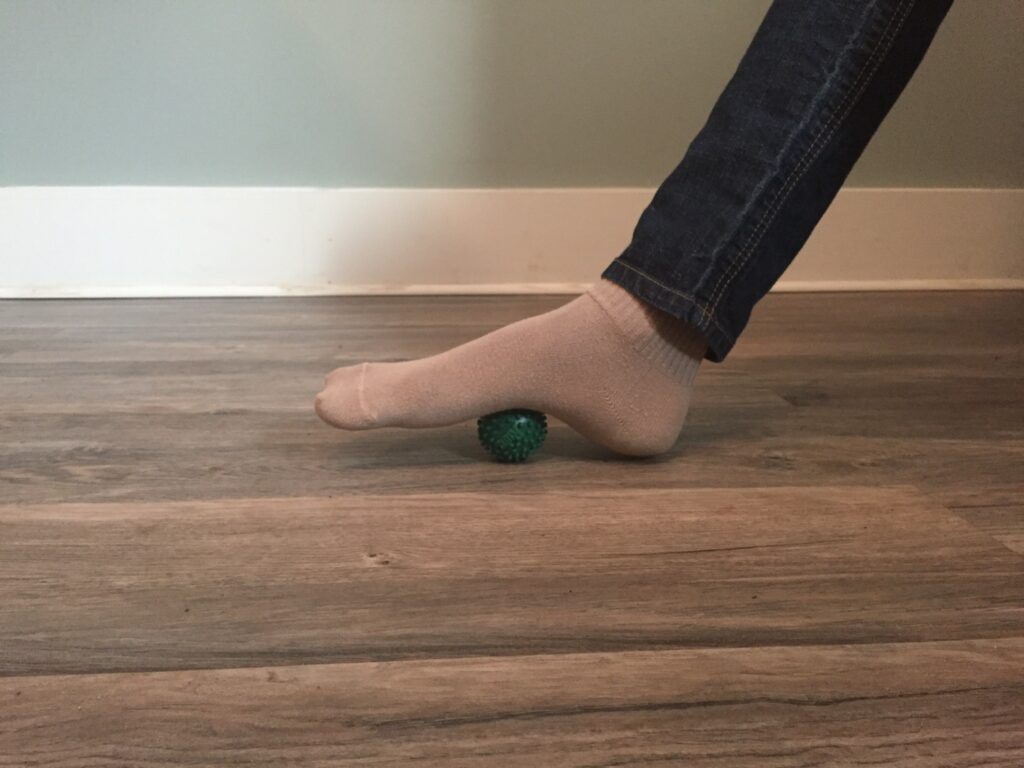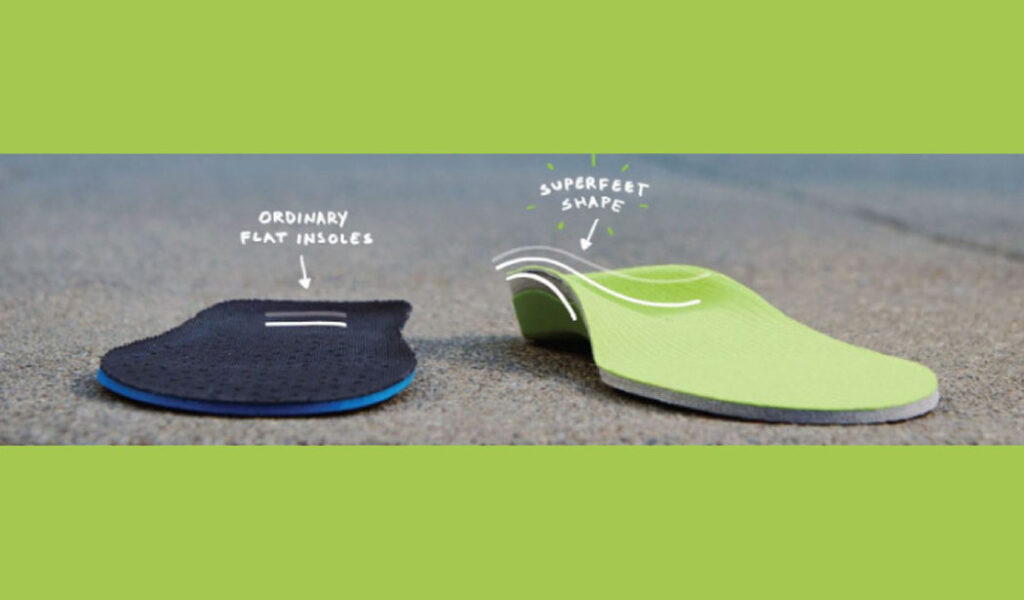We are going to look at how helpful insoles can be for Morton’s Neuroma. Do you have a sharp pain or tingling and numbness between your 3rd and 4th toes? If so, you are probably saying “ouch!” with almost every step. Most often this type of pain is a common condition called Morton’s Neuroma. A neuroma can be quite uncomfortable and make it difficult to walk. But the good news is that many people with a neuroma can get relief (and often immediate relief!). Better footwear and insoles for Morton’s Neuroma are usually the best place to start.
What is a Neuroma?
A neuroma occurs when a nerve between the toes becomes enlarged and inflamed. Because of this it is pinched between the toe bones and pain is felt. The condition is termed “Morton’s Neuroma” when it specifically occurs between the 3rd and 4th toes.
Neuroma pain can be constant, or it can be intermittent. You might feel a burning in your forefoot, or you may feel as if you are stepping on a small pebble. Or it might be some tingling or numbness or even a sharp pain in the forefoot.
What Caused My Neuroma?
There are multiple possible causes of Morton’s Neuroma. It is most frequently seen in women, probably because it is usually caused by wearing shoes that are tight in the forefoot (such as high heels.) It can also be caused by foot deformities such as hammer toes or bunions. Athletes who play sports that require you to wear tight fitting shoes such as skiing, soccer, or football may notice a neuroma develop. High impact activities such as running or jogging have also been known to be the root cause of Morton’s Neuroma. Pinpointing what caused your neuroma may help you take the needed steps to reduce the pain or make it go away.
How Will Insoles Help?
Insoles for Morton’s Neuroma can be an important factor for treatment. Insoles have been shown to give relief, especially if they are designed with a metatarsal pad (met pad.) An insole without a met pad will redistribute pressure in the foot and this alone may be enough to lessen or relieve the neuroma pain. Insoles with a met pad can specifically help relieve the pressure being put on the nerve. The metatarsal pad is placed right behind the toe bones and allows better blood flow and circulation between those toe bones where the nerves are.
Recommended Insoles
Here are some ideas for good quality insoles with metatarsal pads:
Insoles with met pad for a medium arch: 10 Seconds Motion Control or Birkenstock ¾
Insoles with met pad for a high arch: 10 Seconds Ultra Arch or Birkenstock ¾
Minimal arch support with met pad (all arch types): FootHealth EveryDay ¾ Insert, Pedag Holiday ¾ (These are the thinnest arch supports and will fit the best in tight-fitting shoes or cleats.)
Cushioned insole with met pad (all arch types): 10 Seconds Pressure Relief with Met Pad (This insole used to be known as the New Balance ipr 3030 and is really more of an arch cushion. It adds a comfortable cushion with metatarsal relief.)
The Met Pad Is a Key For Relief from Neuromas
If you don’t want to wear an insole, another option is to just purchase a metatarsal pad and put that directly in your shoe. The key is proper placement of the met pad. You do not want the metatarsal pad directly beneath the ball of the foot. It should be placed just behind the ball of the foot where the arch ends. For those who know anatomy, it should be placed proximal to the metatarsal heads. You can refer to the picture below for proper placemen. If you are unsure of where to place the pad you will want to get some help from a medical professional.

Other Morton’s Neuroma Treatments
Another key in treating a neuroma is to remove the factor aggravating it. Such as…stop wearing tight shoes! Tight shoes continue to pinch those nerves between the toes which equals continued pain. You will want to look for shoes with a rounded toe box. You should be able to wiggle your toes in your shoes.
While your foot is healing you will also want to avoid shoes that put extra weight and pressure on the forefoot, such as high heels or wedges. The best choice of footwear is a shoe with a stiffer sole and a rocker forefoot. The rocker aids in taking pressure off the forefoot quickly.
Altering your footwear, wearing insoles, and adjusting your activities are the most conservative level of treatment. If your condition does not improve with home treatment you will want to see a doctor for an official diagnosis and additional treatment options. Acupuncture has been shown to reduce inflammation and some patients report relief from neuroma with this treatment. Cortisone shots are another treatment option that have proved effective for some. Surgery on the nerve on is usually a last resort after all other treatment options have failed.




